
What is a gunkan?
Gunkan sushi: what is it, where does it come from and how do you eat this delicious form of sushi?
Home » Sushi etiquette: The 10 unwritten rules at an Omakase Sushi restaurant
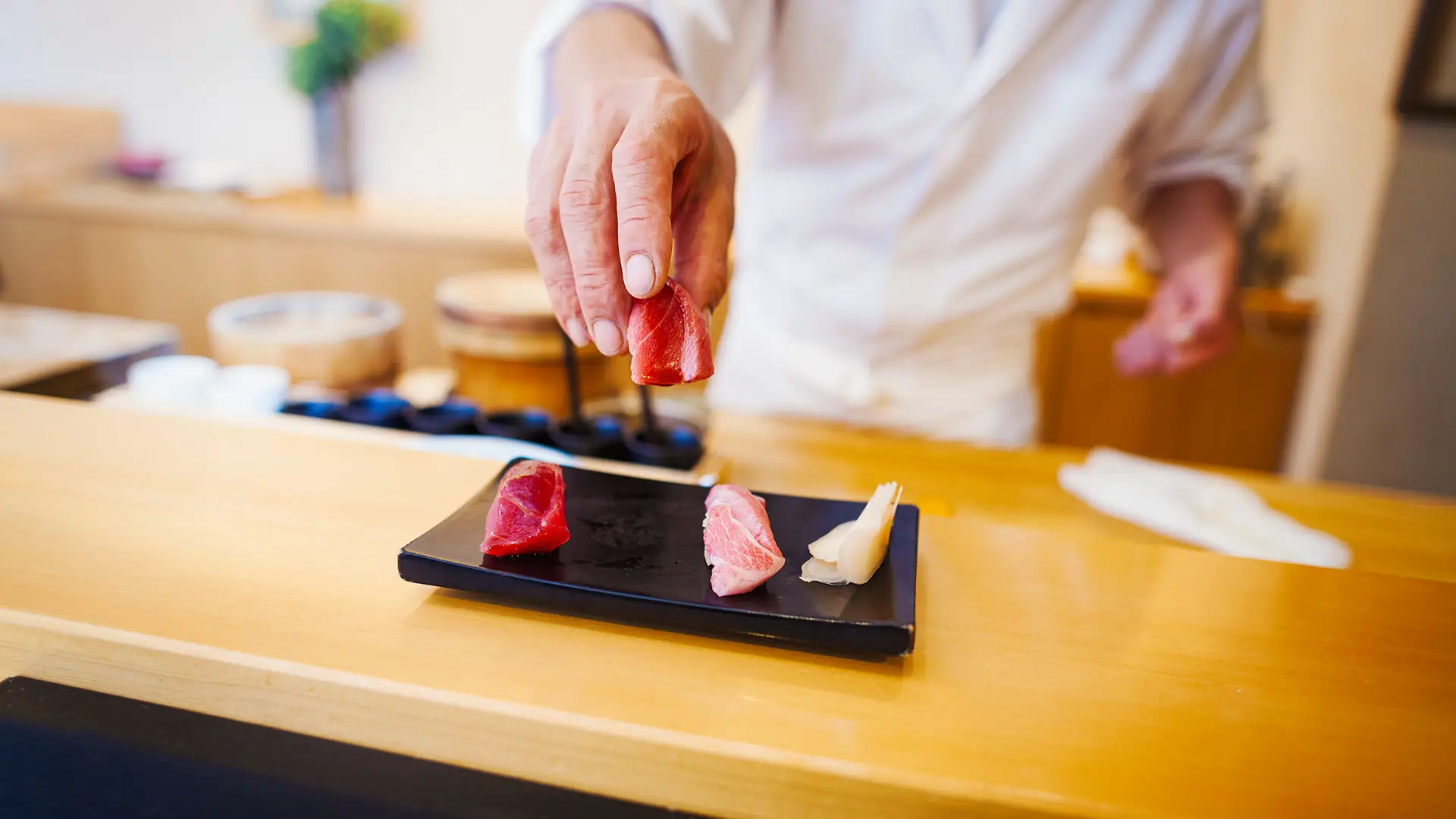
Imagine this: you walk into an Omakase sushi restaurant and you immediately sense that this is not going to be an ordinary dinner. This is going to be a special culinary experience. The chef is in charge, and you will be completely surprised by his craftsmanship and passion for Japanese cuisine. ‘Omakase‘ literally means “I leave it up to you.”, and that’s exactly what you do. The chef carefully chooses the best ingredients, puts together each dish with attention to detail, and you get the privilege of enjoying it. How fun is that? This is a culinary journey, where every bite is an adventure! I love it so much and I really enjoy coming to a good omakase sushi restaurant like Ken Sushi in Amsterdam. My taste buds are then presented with a feast time after time. Great!
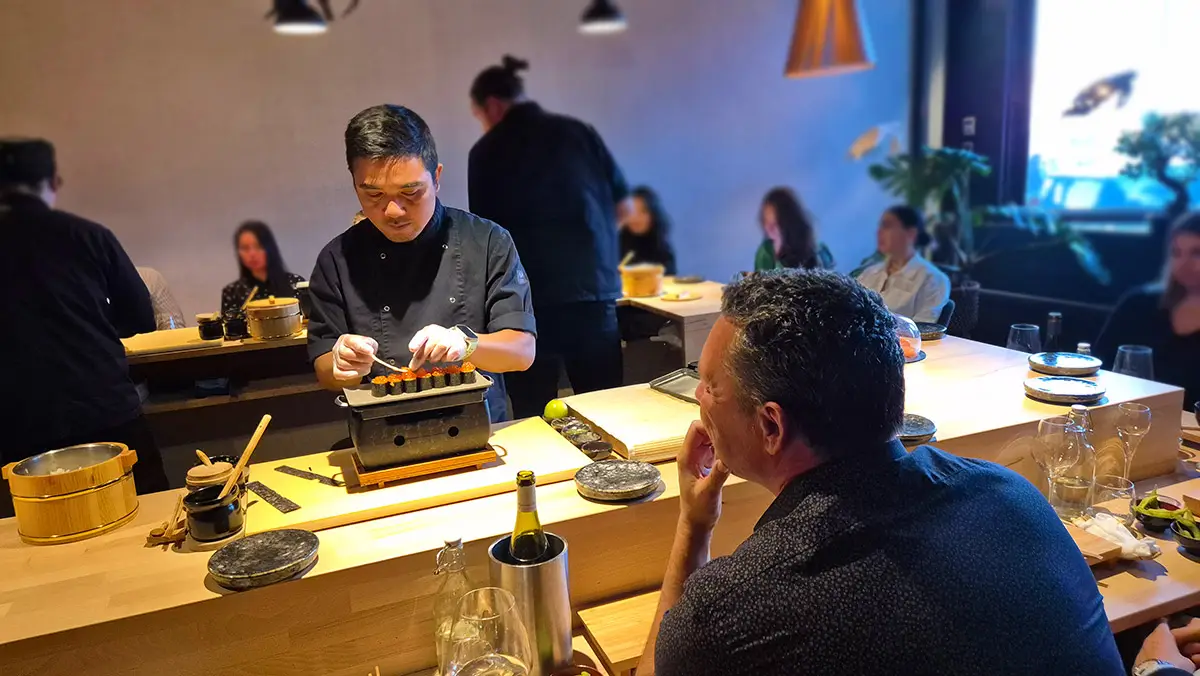
But wait, did you know that there are also some unwritten rules that will take your experience to the next level? Sushi is not just another meal; it is an art form, from the preparation to the way you eat it. If you follow these simple but important etiquette rules, you will not only enjoy the refined flavors even more, but also show that you respect the ancient Japanese food culture. Whether you’re a seasoned sushi fan or just starting to discover this special world, these tips will help you eat your sushi like a true connoisseur!
Therefore, here I tell you the most important do’s and don’ts for your ultimate Omakase sushi experience so at least you know how it’s done!
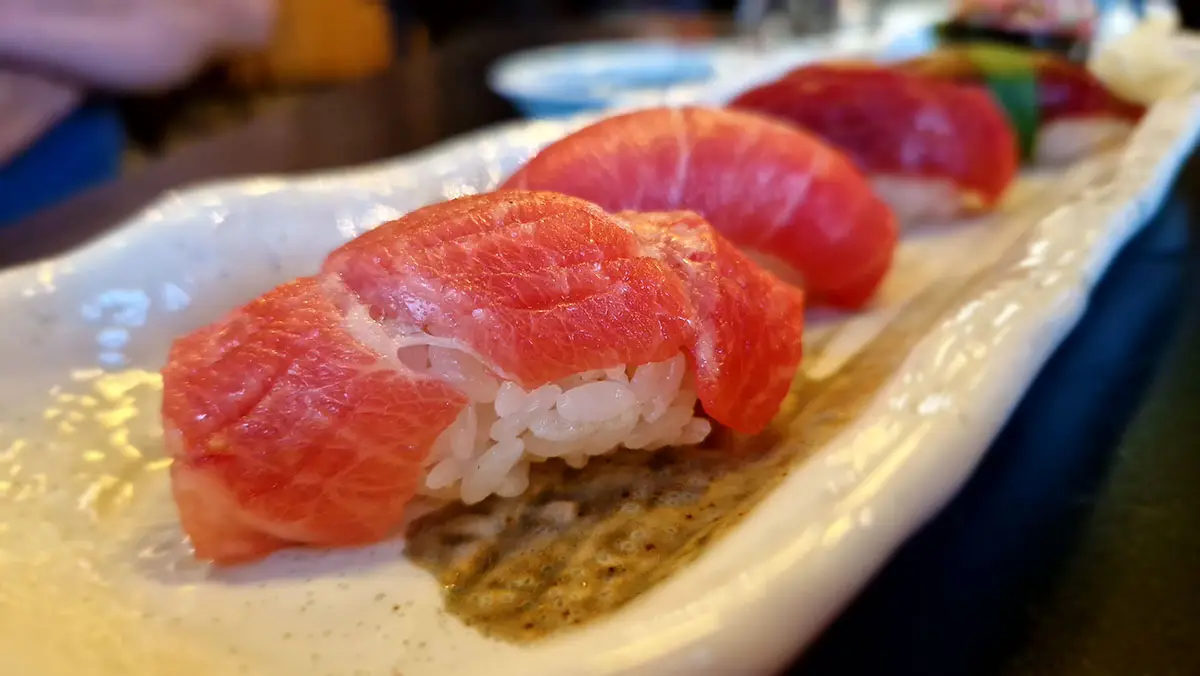
We start right at the basics, because an Omakase experience is all about perfection: each sushi is prepared by the chef with care and precision, with just the right balance of flavors. It is truly a work of art on your plate. But what often happens? People dip their sushi in soy sauce, rice-side down. Ouch! That’s exactly what you shouldn’t do. Dipping the rice side down disrupts the careful balance of flavors the chef has created, and it can even affect the texture of the rice. And worse, the rice may fall apart and absorb too much soy sauce, overshadowing the subtle flavors.
The right way to enjoy your sushi? Dip the fish side very briefly in the soy sauce, if at all necessary! The chef has often already added just the right amount of soy sauce or seasonings, so extra sauce may be too much of a good thing. By dipping only the fish side lightly in the sauce, you keep the flavors in perfect balance and prevent your sushi from getting too salty or falling apart limply. Trust the chef, and let the flavors shine as intended!
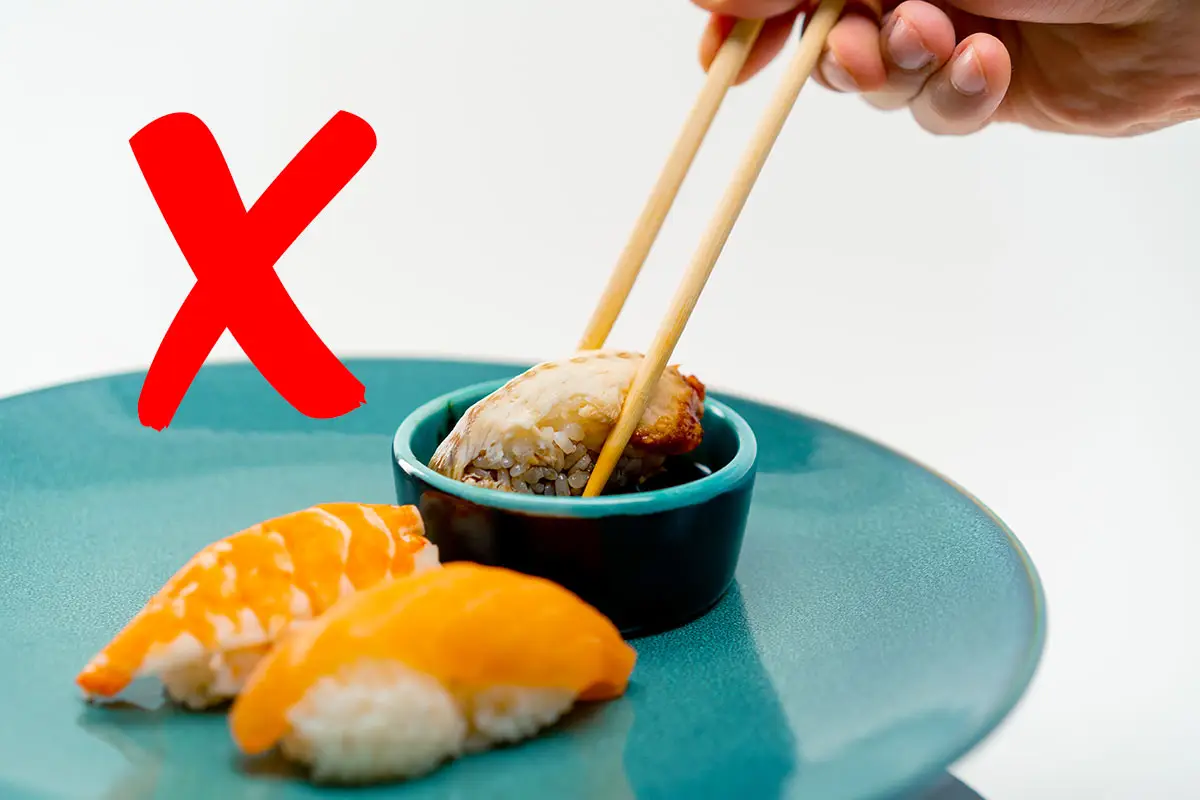
The timing of eating sushi is essential in an Omakase restaurant. Once the chef presents you with a piece of sushi, eat it within 30 seconds. Yes, really. Do it. The ingredients are super fresh and often just brought up to temperature for the perfect taste experience. Waiting can mean the sushi cools or dries out, detracting from the chef’s intent. A mortal sin anyway! By eating right away, you enjoy the texture, temperature and freshness of the sushi to the fullest. The chef happy and you happy.
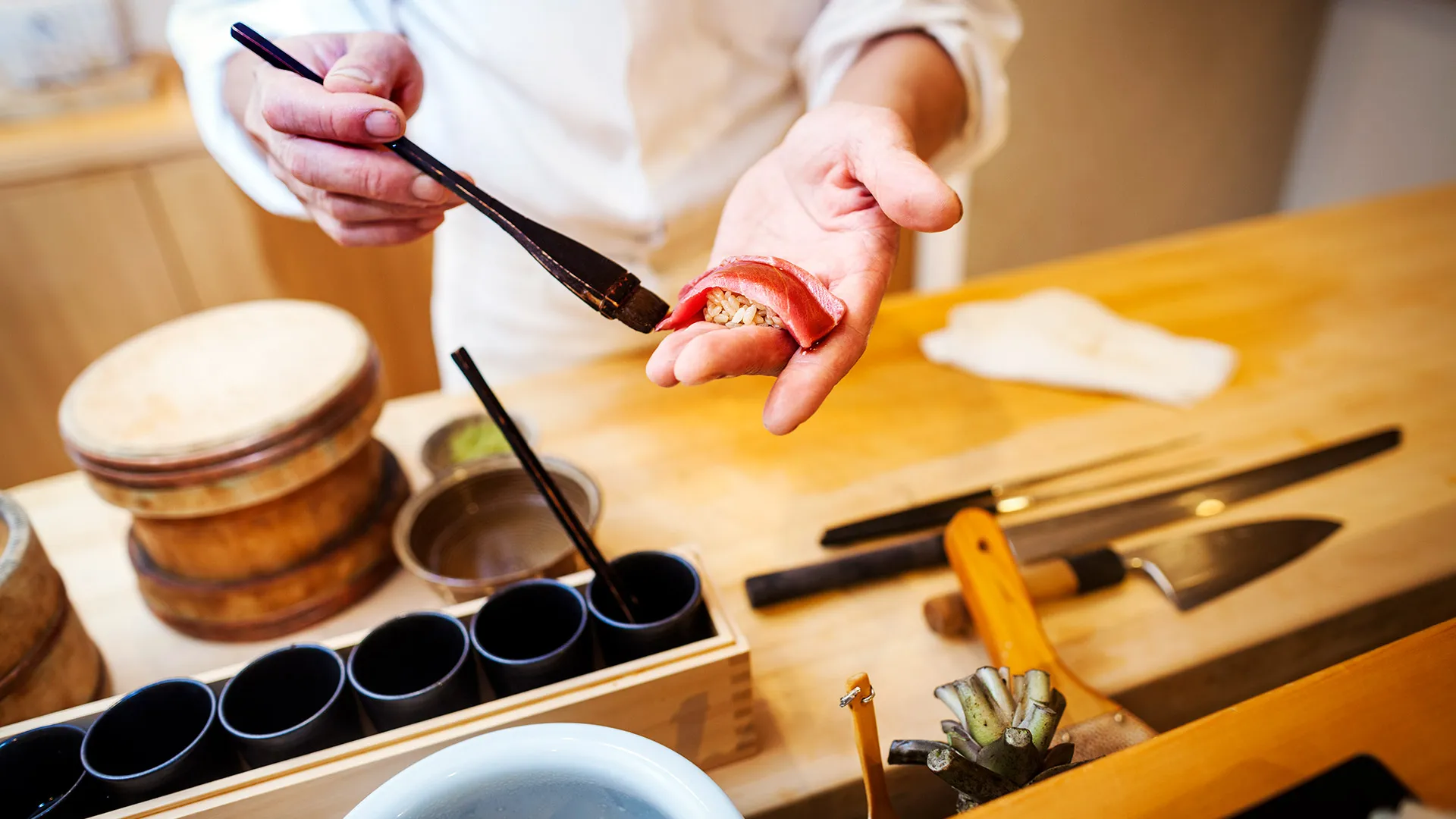
Sushi is not just a meal, it is a work of art that has been assembled with precision. At an Omakase restaurant, each bite is prepared with the utmost care, designed to fit into your mouth in one sitting. The idea is that you experience the full harmony of flavors and textures in a single bite. If you bite off a piece of sushi, you break that perfection and miss the experience as the chef intended. Not only is this considered rude, but you are depriving yourself of the opportunity to taste the full explosion of flavors that occurs when the fish, rice and toppings spread evenly in your mouth.
So, how do you enjoy your sushi to the fullest? Take the whole piece in one sitting! It may seem like a small “rule,” but it makes a world of difference. When you eat the sushi in one bite, the flavors come together exactly as the chef intended. This is a crucial part of the Omakase experience, where every detail counts. And believe me, that one moment when the flavors spread harmoniously in your mouth is pure magic!
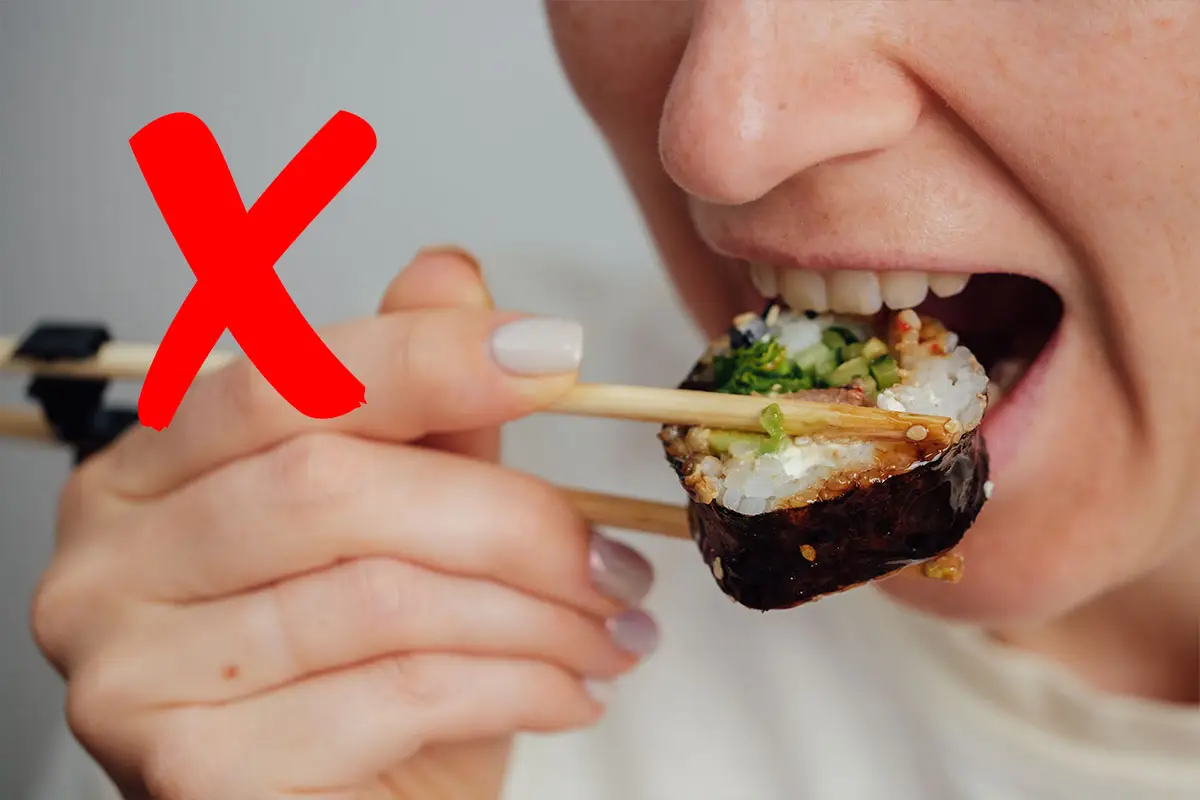
I saw someone do it once and it broke my sushi heart. No, you are really never, ever going to do this. Cutting sushi in an Omakase restaurant is a big miss. As mentioned, each piece of sushi is made to be eaten in one bite. Cutting can not only ruin the presentation but also affect the taste and texture. Respect the chef’s craftsmanship by eating the sushi whole. This will keep the sushi exactly as it was intended: a perfect balance of flavors and textures. So put down that knife. Fast! The only person who cuts the sushi is the chef himself.
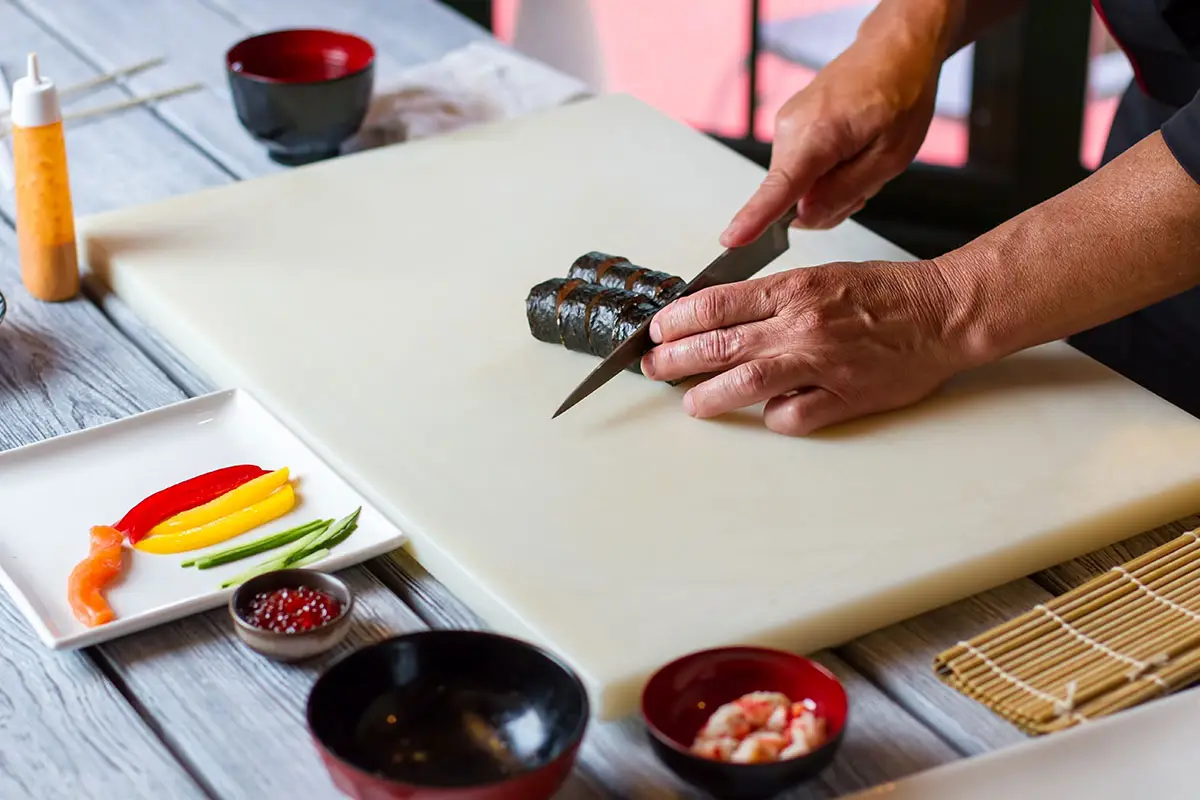
Ah, eating sushi with a knife and fork? No, that’s really a no-go at an Omakase restaurant! Imagine arriving at a wonderful sushi dinner and grabbing your knife and fork-that would be about the same as eating a pizza with a spoon! You just…..don’t do that!
Sushi is traditionally eaten by hand or with chopsticks, and for good reason. It’s not just about respecting tradition, but also about enhancing your experience. With your hands or chopsticks, you can better feel the delicate texture of the sushi and enjoy each bite as it was intended.
And let’s face it, eating with your hands is just plain fun, right? It almost feels like you’re a secret sushi expert as you lift up that perfectly shaped nigiri and effortlessly wolf it down. Plus, it prevents you from flattening the rice with cutlery, ruining the carefully crafted morsels. So, leave that fork behind, dare to take the traditional route, and discover how much more fun (and tasty) eating sushi can be! How very much your parents taught you to eat with knife and fork….sushi eating is done with your hands and chopsticks.
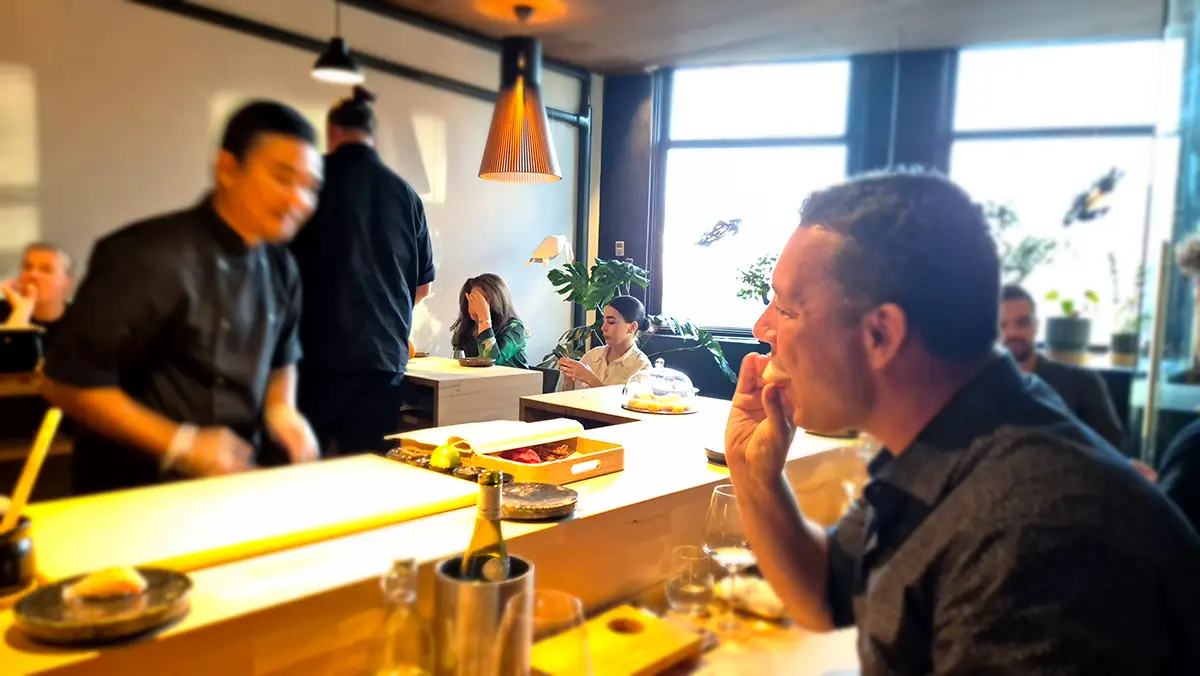
Imagine this: the chef prepares a perfect piece of sushi for you with precision and passion, and you decide to take the fish off and eat it separately. That’s a bit like going to a concert and listening only to the drum solo while ignoring the rest of the band. Oops! Each ingredient in sushi is carefully chosen to work together as a harmonious whole, just as a band needs each instrument for the perfect sound.
So, leave that sushi nice and intact! When you take it all in one bite, you experience the full interplay of flavors, exactly as the chef intended. And honestly, why would you want to miss that taste explosion?
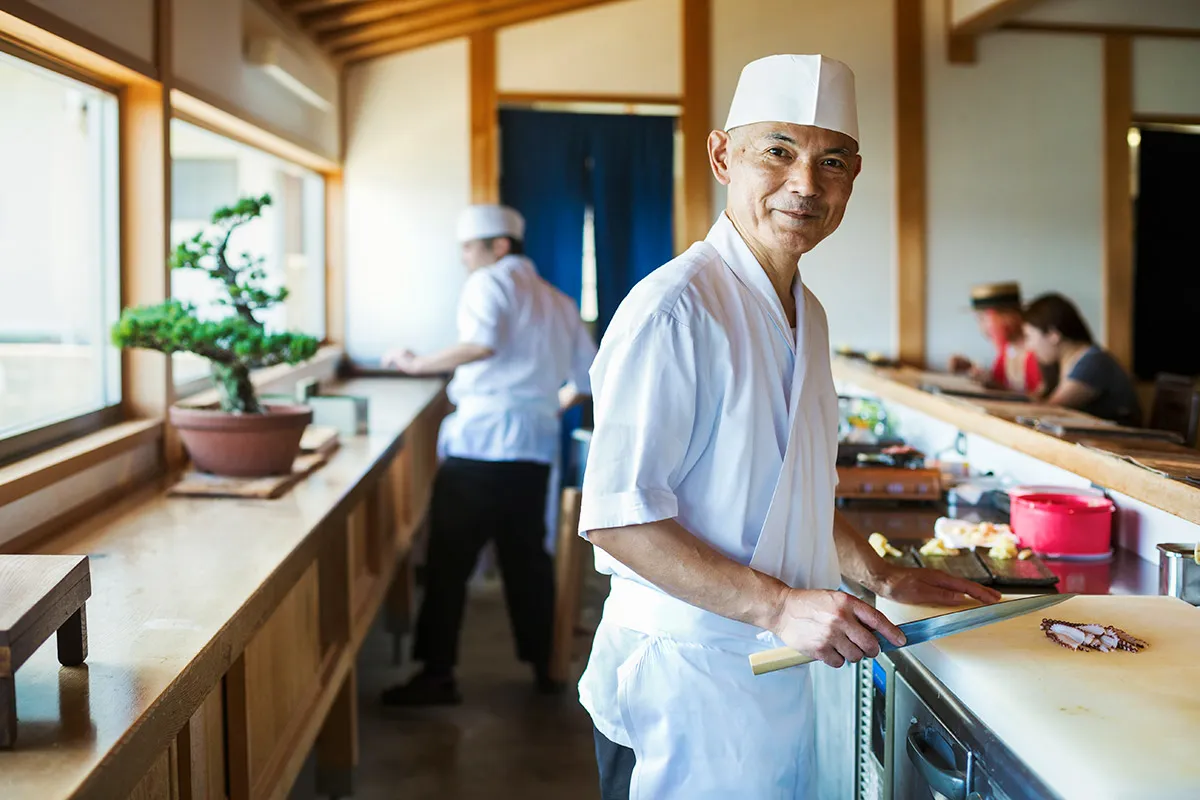
Let’s talk for a moment about passing sushi-a seemingly polite act that is considered a major faux pas in Japan, and certainly in an Omakase restaurant. Imagine you have a beautiful piece of sushi and you decide to pass it on to your friend. But before you know it, you look into the faces of your fellow diners and see that they are all getting uncomfortable. This is because passing sushi with your chopsticks makes their hearts race, and not with excitement! After all, it reminds you of funeral rites, and that’s not exactly the vibe you’re looking for on a culinary adventure.
So, what do you do? If you want to share something, use the back of your chopsticks-yes, the clean side, don’t worry, those have never disrupted a sushi experience! Or you can always ask the chef for help; after all, he is there to help you enjoy this culinary journey. Remember, it’s always better to act with respect for the culture. And let’s face it, who wants awkward silences at the table when sushi is on your plate?
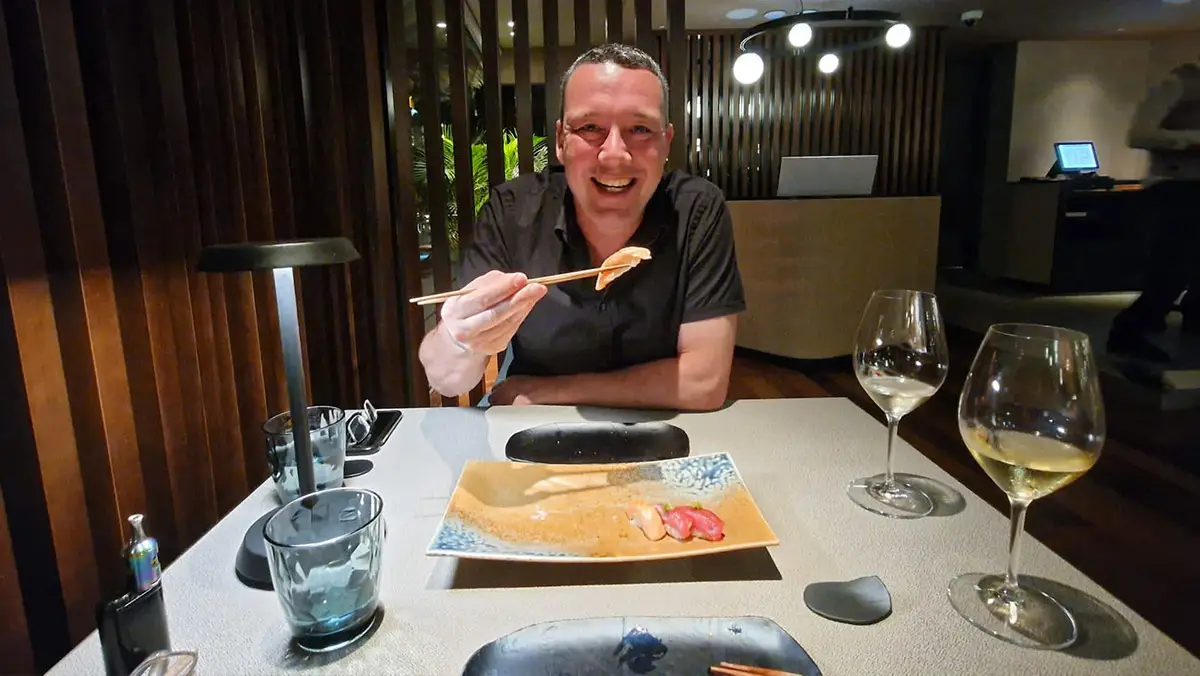
Here comes a subtle but oh-so-important rule: never put your chopsticks directly on the table in an Omakase restaurant! It may seem like a small thing, but trust me, that’s just as wrong as a sushi restaurant that doesn’t serve sushi! Instead, always use the “hashioki,” the chopstick holder laid out specifically for this purpose. This not only shows that you respect Japanese culture, but it also keeps the table neat and clean-and you want that anyway, because who likes a messy dining experience?
And if you happen to be at a restaurant without hashioki, don’t worry! You can just put your chopsticks on the edge of your plate-yes, really! This small gesture of attention to detail shows your appreciation for Japanese etiquette. It’s like the difference between a casual lunch and a fancy dinner: it’s all about those intricacies. So remember, if you treat your chopsticks well, they will reward you with a great sushi experience!
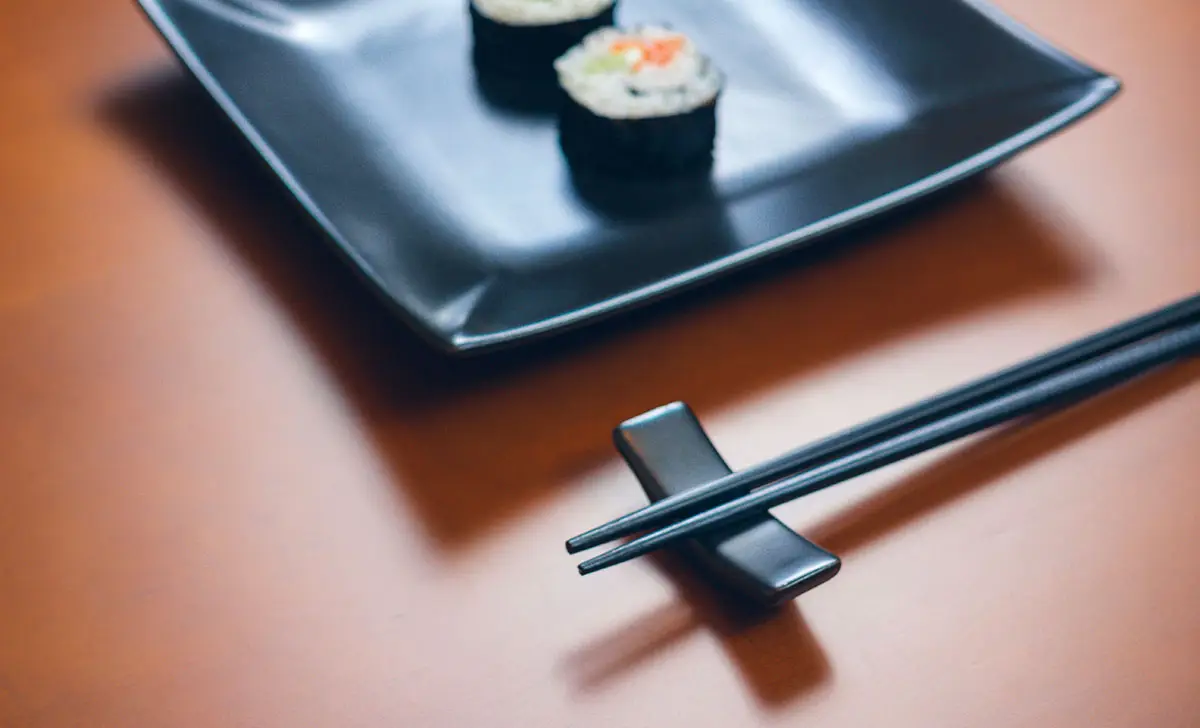
On my first day of shooting, I saw my cameraman Gerwin place the pieces of ginger on my beautiful sushi and then eat it. I was in shock! And immediately tried to dissuade him. After all, ginger, also known as “gari,” is the secret hero in a sushi restaurant! This fresh, bright pink goodness is not meant to be a topping for your sushi; rather, it serves to cleanse your taste buds between dishes. Imagine this: you’ve just had a delicious bite of sushi, and you want to reset your palate for the next taste sensation. That’s where ginger comes in!
So, use ginger the way it’s meant to be used: take a bite between bites to keep the flavors fresh and exciting. It’s the perfect way to get ready for the next explosion of flavors on your plate!
So don’t do it again Gerwin 🙂
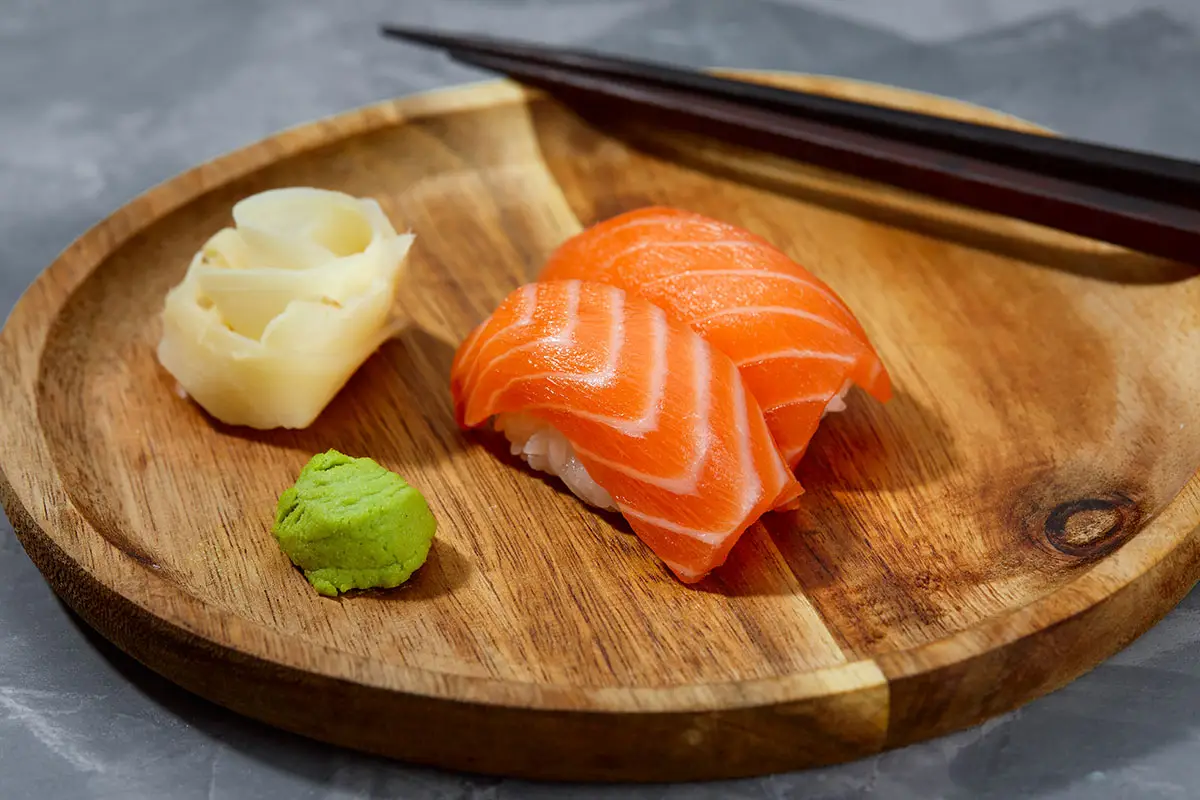
No, just don’t do it! In an Omakase restaurant, the chef has usually already placed the perfect amount of wasabi between the fish and rice-and believe me, that’s no accident. Mixing wasabi with soy sauce is a Western custom that is often seen in Japanese culture as “ruining” the refined flavors. It’s like asking a gold medalist to spice up their performance with glitter stickers!
The chef has balanced every detail, so trust you won’t need extra wasabi or soy sauce. Let the pure flavors of the ingredients speak; they have their own story to tell! Enjoy the harmony the chef has created and keep your hands away from that soy sauce bottle-your taste buds will thank you!
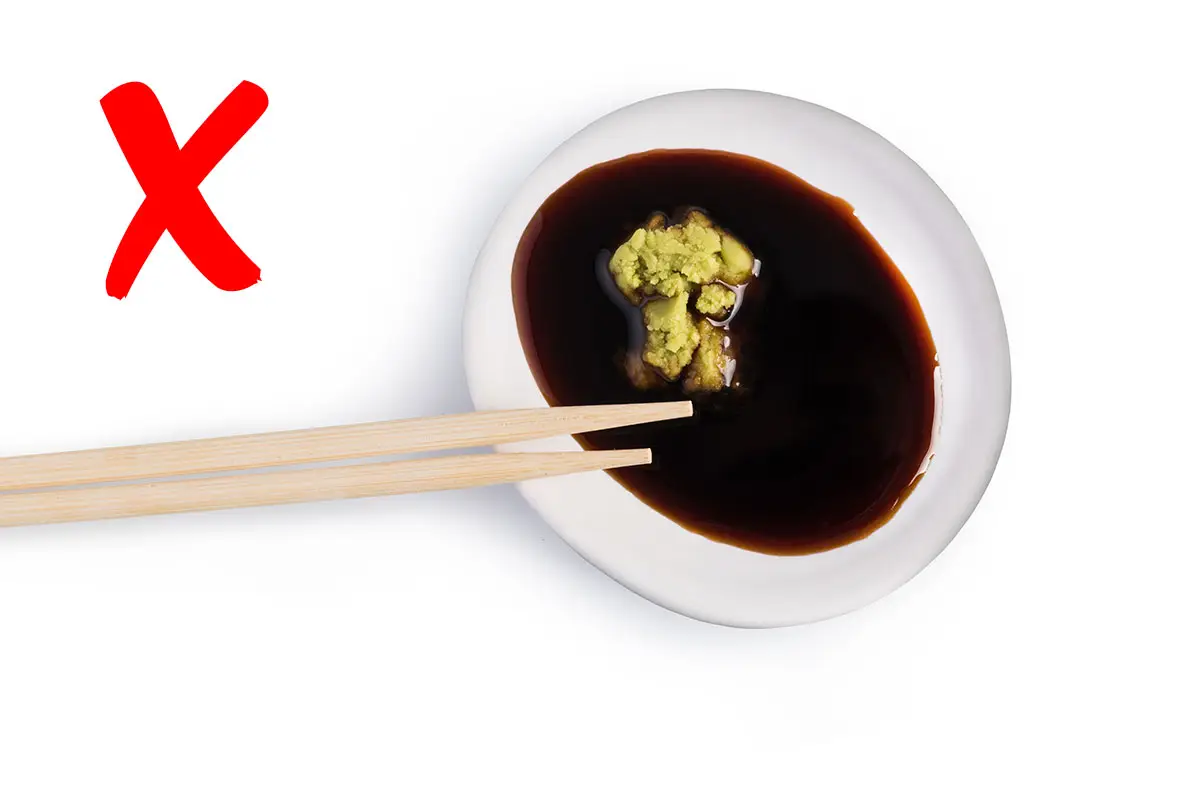
An Omakase experience is so much more than just food; it is a tribute to the art of the sushi chef and the tradition involved. It’s like a culinary Broadway show, complete with tasty dance moves and beautifully dressed ingredients! By following these 10 unwritten rules, you show that you respect the culture and craftsmanship-because let’s face it, no one wants to be known as the “sushi ruffian” of the evening.
It’s all about appreciating the sophistication and precision that comes with each sushi. So the next time you treat yourself to an Omakase experience, keep these rules in mind. Respectfully enjoy the masterpieces created for you-your taste buds and the chef will thank you! And who knows, you might even become the hero of the evening, with a perfectly balanced bite of sushi in your hand!

Sushi chef and founder of the School of Sushi. Making your own sushi is easier and more fun than you think! Through workshops and online courses, I’ll show you how to roll delicious sushi for your friends & family. Ready to roll?
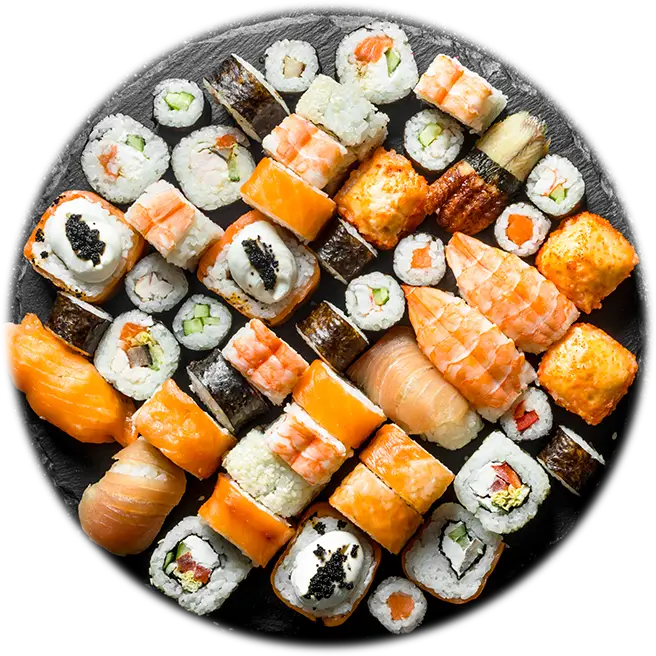
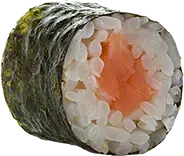

Gunkan sushi: what is it, where does it come from and how do you eat this delicious form of sushi?

If you want to make your own sushi at home, you need that flavorful sushi rice. But how do you cook the perfect sushi rice? I explain it to you here!

Nigiri vs sashimi: Uncover the savory secrets and taste the difference! Learn what sets these authentic Japanese delights apart. Click here!

What is Tobiko, where can you buy it and how many different types of Tobiko are there really? I explain it to you here!

Eating out and having food delivered has become considerably more expensive. Did you know that you can save up to 80% of your costs if you make your own sushi?

My experience at De Sushimeisjes in The Hague: fresh, creative sushi and top service. Read the review and plan your next sushi date soon!
Try it out for free
Making your own Sushi at home? It’s not difficult at all.
Download my free guide with delicious sushi recipes now and from now on you can conjure up the most delicious maki, nigiri and gunkan sushi yourself.
From beginner to advanced sushi chef, my recipes are a treat for everyone!
Where do I need to send it?
Phone: +31 (0)6 12 91 44 99
E-mail: rik@schoolofsushi.com
Web: https://schoolofsushi.com
Chamber of Commerce 28109089
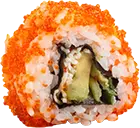



Master the art of sushi-making at home with my fun online course, featuring 50+ step-by-step videos, expert tips, and delicious recipes to impress your loved ones!